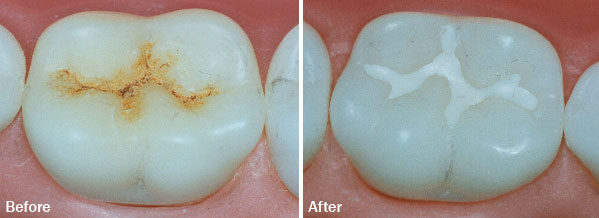What is a Pediatric Dentist?
Pediatric dentists are dedicated to the oral health of children from infancy through the teen years. They have the experience and qualifications to care for a child’s teeth, gums, and mouth throughout the various stages of childhood.
Children begin to get their baby teeth during the first 6 months of life. By age 6 or 7 years, they start to lose their first set of teeth, which eventually are replaced by secondary, permanent teeth.

Without proper dental care, children face possible oral decay and disease that can cause a lifetime of pain and complications. Early childhood dental caries—an infectious disease—is 5 times more common in children than asthma and 7 times more common than hay fever. About 1 of 5 (20%) children aged 5 to 11 years have at least one untreated decayed tooth.
What types of treatments do pediatric dentists provide?
Pediatric dentists provide comprehensive oral health care that includes the following:
- Infant oral health exams, which include risk assessment for caries in mother and child
- Preventive dental care including cleaning and fluoride treatments, as well as nutrition and diet recommendations
- Habit counseling (for example, pacifier use and thumb sucking)
- Early assessment and treatment for straightening teeth and correcting an improper bite (orthodontics)
- Repair of tooth cavities or defects
- Diagnosis of oral conditions associated with diseases such as diabetes, congenital heart defect, asthma, hay fever, and attention-deficit/ hyperactivity disorder (ADHD)
- Management of gum diseases and conditions including ulcers, short frenulum, mucoceles, and pediatric periodontal disease
- Care for dental injuries (for example, fractured, displaced, or knocked-out teeth)
Pit & fissure sealants
Pits and fissures of the occlusal surfaces of the posterior teeth are more prone to caries development than the smooth surfaces due to their morphological complexity, making dental hygiene more challenging and leading to increased plaque accumulation. The enamel in pits and fissures cannot receive the same protection given by fluorides compared to the enamel on smooth surfaces.
The use of pit and fissure sealants provides a physical barrier that inhibits microorganisms and food particle accumulation, preventing caries initiation, and arresting caries progression.

Permanent first molars, followed by second molars, show the highest caries prevalence. The management of occlusal caries on permanent molars represents a significant challenge because the onset of caries occurs soon after they erupt into the oral cavity. The effectiveness of pit and fissure sealants relays on their long-term retention.
